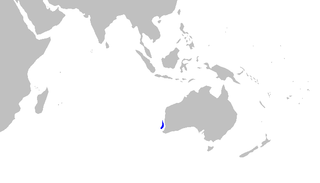
A tuna is a saltwater fish that belongs to the tribe Thunnini, a subgrouping of the Scombridae (mackerel) family. The Thunnini comprise 15 species across five genera, the sizes of which vary greatly, ranging from the bullet tuna up to the Atlantic bluefin tuna, which averages 2 m (6.6 ft) and is believed to live up to 50 years.

Mackerel is a common name applied to a number of different species of pelagic fish, mostly from the family Scombridae. They are found in both temperate and tropical seas, mostly living along the coast or offshore in the oceanic environment.

Herring are various species of forage fish, belonging to the order Clupeiformes.

The Chao Phraya River is the major river in Thailand, with its low alluvial plain forming the centre of the country. It flows through Bangkok and then into the Gulf of Thailand.

Sardine and pilchard are common names for various species of small, oily forage fish in the herring suborder Clupeoidei. The term 'sardine' was first used in English during the early 15th century; a somewhat dubious etymology says it comes from the Italian island of Sardinia, around which sardines were once supposedly abundant.

Puntius is a genus of small freshwater fish in the family Cyprinidae native to South Asia and Mainland Southeast Asia, as well as Taiwan.

Wobbegong is the common name given to the 12 species of carpet sharks in the family Orectolobidae. They are found in shallow temperate and tropical waters of the western Pacific Ocean and eastern Indian Ocean, chiefly around Australia and Indonesia, although one species occurs as far north as Japan. The word wobbegong is believed to come from an Australian Aboriginal language, meaning "shaggy beard", referring to the growths around the mouth of the shark of the western Pacific.
The conservation status of a group of organisms indicates whether the group still exists and how likely the group is to become extinct in the near future. Many factors are taken into account when assessing conservation status: not simply the number of individuals remaining, but the overall increase or decrease in the population over time, breeding success rates, and known threats. Various systems of conservation status are in use at international, multi-country, national and local levels, as well as for consumer use such as sustainable seafood advisory lists and certification. The two international systems are by the International Union for Conservation of Nature (IUCN) and The Convention on International Trade in Endangered Species of Wild Fauna and Flora (CITES).

The bulldog catshark is a species of shark belonging to the family Pentanchidae, the deepwater catsharks/ This shark is found in the deep waters of the East China Sea and in the Northwest Pacific. In New Zealand waters it is found at the Reinga Ridge, the West Norfolk Ridge, the Hikurangi Trough and the Chatham Rise as well as on the Campbell Plateau.

The longnose catshark is a species of shark belonging to the family Pentanchidae, the deepwater catsharks. This shark is found in the eastern central Pacific from central and southern California and the Gulf of California, between latitudes 38° N and 23° N, at depths down to 1,890. Its length is up to 58 cm.

The ginger carpetshark is a species of carpetshark of the family Parascylliidae endemic to the waters of western Australia. It is a small fish at only 78.1 cm (2.56 ft) TL in length in females and harmless to humans. Its depth range is 204–245 m (669–804 ft) on the upper continental shelf. It is known from only three specimens, so biological and population data are lacking. It is likely not under threat due to its depth range, but its limited range may make it vulnerable to fishing. Reproduction is oviparous and embryos feed solely on yolk.

The Gulf wobbegong or banded wobbegong is a species of carpet shark in the family Orectolobidae, found in southern Australia between Southport, Queensland and Norwegian Bay, Western Australia.

The starry sturgeon, also known as the stellate sturgeon or sevruga, is a species of sturgeon. It is native to the Black, Azov, Caspian and Aegean sea basins, but it has been extirpated from the last and it is predicted that the remaining natural population will follow soon due to overfishing.

Cavefish or cave fish is a generic term for fresh and brackish water fish adapted to life in caves and other underground habitats. Related terms are subterranean fish, troglomorphic fish, troglobitic fish, stygobitic fish, phreatic fish, and hypogean fish.

An anchovy is a small, common forage fish of the family Engraulidae. Most species are found in marine waters, but several will enter brackish water, and some in South America are restricted to fresh water.

Haludaria is a genus of cyprinids native to freshwater habitats in the Western Ghats of India. Originally the genus was named DravidiaPethiyagoda, Meegaskumbura & Maduwage, 2012 which is preoccupied by the dipteran genus DravidiaLehrer, 2010.

Haludaria melanampyx is a species of cyprinid fish endemic to India where it is known from south Kanara through the Travancore hills to the Nagercoil, Nilgiris, and Cauvery drainages in the Western Ghats, India.
Haludaria afasciata, the plain melon barb, is a species of freshwater ray-finned fish belonging to the family Cyprinidae, the family which includes the carps, barbs and related fishes. This species is endemic to India where it is known only from one locality near the city of Nagercoil in the southern Tamil Nadu. The International Union for the Conservation of Nature classifies this species as Endangered, being threatened by sand extraction, deforestation, pollution from agricultural runoff and factories, as well as the invasives, Mozambique tilapia and the weed Pontederia crassipes.

















